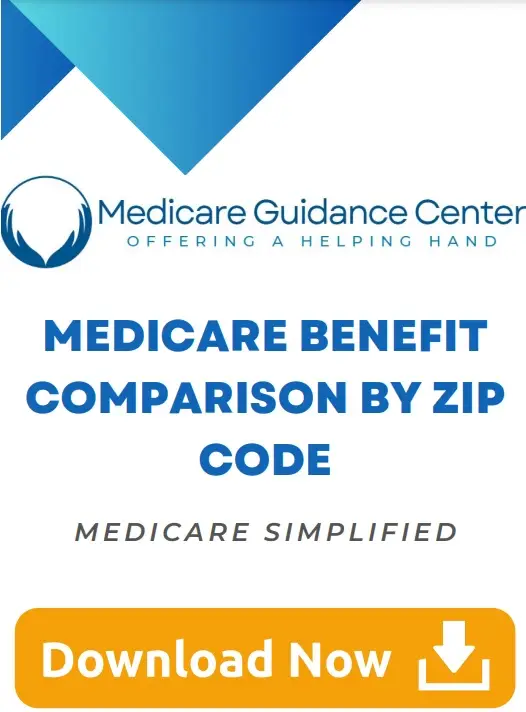Home » Maximum Out of Pocket Prescription Drugs
What Is the Maximum Out-of-Pocket for Prescriptions with Medicare?
If you’re wondering what is the maximum out-of-pocket for prescriptions with Medicare, you’re not alone. Understanding Medicare drug costs can be overwhelming, especially with different coverage stages and changing annual limits. This article breaks down what you need to know about prescription drug spending limits under Medicare Part D in 2025.
By submitting this form, you consent to receive a link to your personalized Medicare plan comparison, services outline, and general updates via automated text messages (SMS), emails, and other electronic communications from Medicare Concepts. Your information is never sold. Please note that you are not required to provide this consent to make a purchase from us. Message and data rates may apply for SMS. You can opt out of SMS communications at any time by replying ‘STOP’ to any message and can unsubscribe from email communications by clicking the ‘unsubscribe’ link in the email
What Is the Maximum Out-of-Pocket for Prescriptions with Medicare?
If you’re wondering what is the maximum out-of-pocket for prescriptions with Medicare, you’re not alone. Understanding Medicare drug costs can be overwhelming, especially with different coverage stages and changing annual limits. This article breaks down what you need to know about prescription drug spending limits under Medicare Part D in 2025.
Understanding the Medicare Prescription Drug Out-of-Pocket Maximum
In 2025, Medicare Part D will introduce a true maximum out-of-pocket (MOOP) limit for prescriptions, capping how much you will pay for covered medications during the year.
What Is the 2025 Out-of-Pocket Limit for Medicare Prescriptions?
As of 2025, the maximum out-of-pocket for prescriptions with Medicare Part D is $2,000. Once you reach this limit, you’ll pay nothing for covered medications for the rest of the calendar year.
This is a major change from past years, when Medicare Part D had no true cap—just a catastrophic phase where you still paid a small share of costs.
What Costs Count Toward the Medicare Drug Spending Limit?
To understand how you reach the maximum out-of-pocket for prescriptions with Medicare, it’s important to know which expenses apply:
Deductible payments
Copayments and coinsurance for covered drugs
Payments made by family members, charities, or State Pharmaceutical Assistance Programs (SPAPs) on your behalf
However, monthly premiums do not count toward the out-of-pocket limit.
How Medicare Part D Coverage Works in 2025
Medicare Part D has several phases, but the introduction of a hard cap at $2,000 in 2025 simplifies things significantly.
Coverage Stages Leading Up to the Out-of-Pocket Limit
Deductible Phase: You pay 100% of drug costs until your deductible is met (some plans may have a $0 deductible).
Initial Coverage: After meeting your deductible, you pay copays or coinsurance until your combined drug spending hits the out-of-pocket threshold.
Maximum Out-of-Pocket Reached: Once your total out-of-pocket for prescriptions hits $2,000, you enter the fully covered phase—you pay nothing for covered drugs for the rest of the year.
How to Reduce Your Medicare Prescription Drug Costs. What is the maximum out-of-pocket for prescriptions with medicare?
Even with a $2,000 MOOP, prescription costs can add up. Here are ways to potentially reduce how much you spend:
1. Check for Extra Help (Low-Income Subsidy)
Medicare’s Extra Help program helps low-income beneficiaries pay for Part D premiums, deductibles, and drug costs. Many with limited income and resources qualify for full or partial assistance.
2. Compare Part D Plans Annually
Each Medicare Part D plan has its own formulary, pharmacy network, and pricing, which affects how fast you hit the out-of-pocket limit. Use Medicare’s plan finder tool or work with a licensed Medicare agent to compare plans during the Annual Enrollment Period.
3. Use Generic and Preferred Medications
Choosing generics or drugs listed as “preferred” in your plan’s formulary can reduce your cost-sharing, allowing you to stretch your prescription spending before reaching the cap.
What Happens After You Reach the Maximum Out-of-Pocket?
Once you’ve paid $2,000 out of pocket for your Medicare-covered prescriptions, you won’t pay anything more for drugs covered under your plan for the rest of the year. This protection from runaway drug costs is designed to give seniors and others with Medicare more peace of mind and financial stability.
Frequently Asked Questions
Can I still pay more than $2,000 out of pocket for prescriptions in Medicare?
Only if you use drugs not covered by your plan, go out of network, or don’t follow plan rules like prior authorization.
Do Medicare Advantage plans have the same drug cap?
Yes. If your Medicare Advantage plan includes Part D drug coverage, the same $2,000 out-of-pocket maximum applies in 2025.
Does this $2,000 cap include premiums?
No. Premiums are separate and do not count toward the prescription drug out-of-pocket maximum.
Summary: A New Era for Medicare Drug Costs
The 2025 change to cap maximum out-of-pocket for prescriptions with Medicare at $2,000 is a significant win for beneficiaries. Whether you take just a few generics or rely on high-cost brand-name drugs, understanding how this new rule works can help you better plan and budget for your healthcare.



